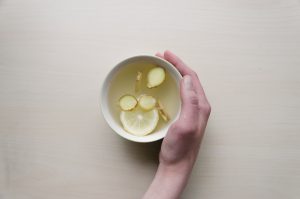Sustainable Packaging: Biodegradable and Recyclable Options.
In today’s world, businesses and consumers alike are becoming more conscious of the impact of their actions on the environment. As a result, companies are now taking steps towards creating a more sustainable future by implementing eco-friendly practices, including sustainable packaging. In this article, we will delve into the world of sustainable packaging, specifically focusing on biodegradable and recyclable options. Let’s explore the benefits of these options and how they can help us move towards a greener and more sustainable future.
The Rise of Sustainable Packaging
Sustainable packaging refers to the use of materials and design elements that have a minimal impact on the environment. This can include the use of renewable resources, reduced carbon footprint, and the ability to be easily recycled or biodegraded. As consumers are becoming more environmentally conscious, they are demanding sustainable options from the brands they support. This has led to a surge in the popularity and availability of sustainable packaging.
Biodegradable Packaging: What Is It?
Biodegradable packaging is packaging that has the ability to break down and decompose into natural elements in a timely manner, without any negative impact on the environment. These materials are often plant-based and can be easily broken down through natural processes like composting. This means that they do not contribute to the buildup of waste in landfills and oceans, making them a more sustainable option. Some examples of biodegradable packaging materials include bioplastics, paper, and compostable packaging.
The Benefits of Biodegradable Packaging
One of the biggest benefits of biodegradable packaging is its positive impact on the environment. As they break down into natural elements, they do not add to the pollution and waste that harms our planet. Additionally, many biodegradable materials are made from renewable resources, making them a more sustainable option in the long run. They also have a lower carbon footprint compared to traditional packaging materials, as they require less energy to produce and transport.
Recyclable Packaging: What Is It?
Recyclable packaging is packaging that can be collected, processed, and used to create new products. This means that the materials used can be reused multiple times, reducing the need for new resources. Some examples of recyclable packaging materials include paper, cardboard, glass, and certain types of plastic.
The Benefits of Recyclable Packaging
Recyclable packaging also has numerous benefits for the environment. By using materials that can be recycled, we can reduce the amount of waste and pollution that ends up in our landfills and oceans. Recycling also helps to conserve natural resources and reduce the carbon footprint of the packaging industry. It also provides economic benefits by creating jobs in the recycling and manufacturing industries.
Why We Should Choose Sustainable Packaging
Both biodegradable and recyclable packaging options offer significant benefits to the environment and our overall sustainability efforts. By choosing these options, we can actively reduce our impact on the planet and move towards a more sustainable future. Additionally, by supporting brands that use sustainable packaging, we are sending a message that we care about the environment and that we expect businesses to do their part in protecting it.
Conclusion
In conclusion, sustainable packaging, specifically biodegradable and recyclable options, offer numerous benefits for the environment and our society as a whole. By choosing these options, we can reduce waste, conserve resources, and move towards a greener and more sustainable future. As consumers, we have the power to make a difference by supporting brands that value sustainability and actively contribute to creating a more eco-friendly world. Let’s make a conscious effort to choose sustainable packaging and be a part of the solution towards a better tomorrow.



